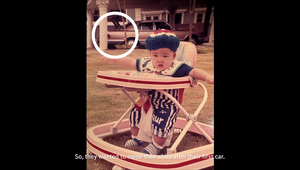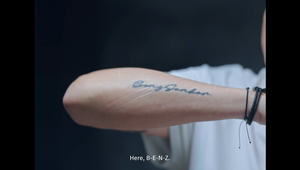
Behind the Work: Using AI Technology to Help Find Missing People

The constant evolution of technology and the way that it can be adapted to suit our needs can be a revelation when it's used for good. That’s exactly what BBDO Bangkok did when it teamed up with The Mirror Foundation and production company Kunana to use Deepfake AI technology in a rather unique way that saw missing person announcements reported by the person missing.
While in the past Deepfake has been used for less than favourable ways, the powerful piece of technology is so incredibly innovative that when used to replace one person’s face for another, The Mirror Foundation was able to ensure that those on the missing list remain in the mind of viewers for longer. Studies show that the human brain remembers and recognises moving images better than still ones. Using this research, to make a missing person more recognisable to the public and therefore increase their chances of being found, Deepfake technology has been used to change the faces of news reporters to the faces of missing persons.
To hear more about the project and how it was executed, LBB’s Natasha Patel caught up with Anuwat Nitipanont, CCO at BBDO Bangkok.
LBB> Where did the idea for The Missing Person come from?
Anuwat> Even though missing person reports are made well and a good effort is being made, because the reports are still-image based, the reporting is easily missed and not memorable, thus never being able to enable public eyes to help find the missing persons. The aim of this campaign was to make the search for missing persons more effective.
LBB> How did you land on using Deepfake AI for this project?
Anuwat> Studies show that the human brain remembers and recognises moving images better than still ones. However, every missing person report currently uses the method of still photos as a reference. We needed to make the appeal more relevant and impactful to the public, by making the missing person as present and real as possible. The strategic idea is to bring missing people back, as real people, to report themselves. When missing people are directly asking for your help, it is impossible to ignore. That’s why Deepfake technology is the perfect solution for us in order to ensure the missing persons are the most recognizable to the public and increase their chances of being found.
LBB> I like how you used this tech for good, when it can often be viewed as negative, so with that in mind what has the public's reaction been to this campaign?
Anuwat> By using this Deepfake tech, we received a lot of positive feedback from the public. They are amazed by the fact that this technology can be used for something good too. The project made them realise that, like many technologies out there, Deepfake has the potential to be utilised for both good and bad things and this project only represents one of many possibilities to use this technology for a good cause.
LBB> What research went into this campaign and where did insights come from?
Anuwat> From the fact that most of the current reporting for missing people is still-image based, we dug into research and studies and found that moving images are much more recognisable and attract more attention than static images. With these insights, we decided to come up with a solution to reinvent how we report the missing persons news using Deepfake.
LBB> How did you work with The Mirror Foundation to ensure this campaign was effective?
Anuwat> Besides TV news channels, we also got several big-name celebrities who donated their faces to search for the missing people by joining the campaign. By utilising their channels which have millions of followers (Facebook, Instagram. Twitter, TikTok), combined with The Mirror Foundation’s own social channels, we generated a lot of buzz and conversation online.
LBB> What has the result been thus far, have any people been found?
Anuwat> Since we launched the campaign two weeks ago, we received 89,733 leads relating to missing people. No one has been found yet but we have received some important information from those promising leads.















